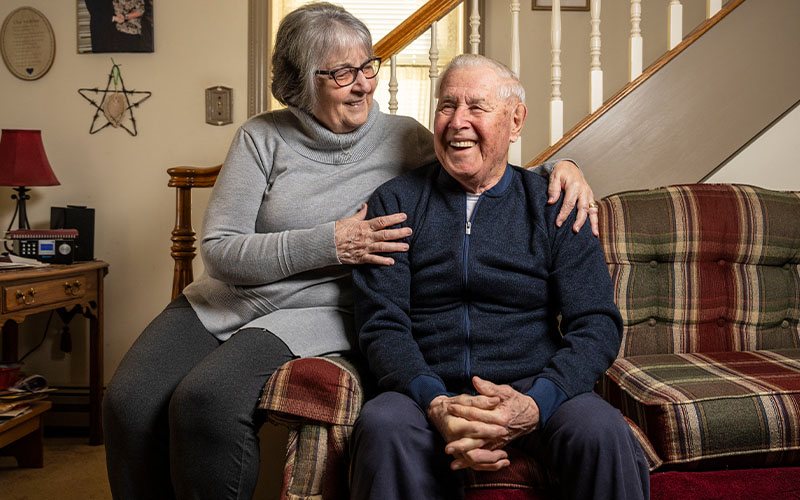PAIN-FREE Following Carpal Tunnel Surgery
Married for 56 years, Donald and Vickie Hess know each other so well, they finish each other’s sentences. So, it was no surprise that, while Donald was “trying to be a tough guy” and live with hand pain caused by carpal tunnel syndrome (CTS), Vickie could see otherwise.
“For two years, his pain progressively got worse,” Vickie says. “He couldn’t make a fist. He struggled to pick up papers or handle money.”
“That was a good thing,” Donald jokes, “because Vickie doesn’t like to give me too much money.”
Yet Donald’s pain and numbness, which affected two fingers and his thumb on his left hand, was no laughing matter. Even so, Donald, a U.S. Army veteran, was determined to tough it out. That was, until he slipped and fell on a cement stoop outside his Marlborough Township house
in January 2024.
“A couple of minutes later, I couldn’t stand the pain,” he says. “I couldn’t sleep. I couldn’t lift anything.”
A surprising find
An X-ray at the Harleysville Outpatient Center the next morning confirmed that Donald’s wrist wasn’t broken. He received a recommendation to follow up with Colin Ackerman, MD, a fellowship-trained hand surgeon and CTS expert with Upper Bucks Orthopaedics at Grand View Health.
“CTS happens when the median nerve, which runs through the carpal tunnel inside the wrist, becomes compressed, causing pain and numbness in the hand and fingers,” Dr. Ackerman says. Arthritis and diabetes—two health conditions Donald has—can cause it. Studies show CTS can peak between ages 50 – 54, and again between ages 75 – 84. Donald was 84 when diagnosed.
“Millions of people like Donald live with CTS, but many don’t realize it can be fixed with a relatively quick outpatient procedure,” says Dr. Ackerman. That procedure is carpal tunnel release surgery, which removes pressure on the median nerve by cutting the ligament that’s compressing it.
A helping hand
Dr. Ackerman performs two types of carpal tunnel release surgery: Open, which requires a two-inch scar in the hand, and endoscopic, performed with tiny instruments and a camera through a smaller (half inch) scar. The endoscopic approach offers less pain, less scarring and a faster recovery. However, not everyone qualifies for endoscopic surgery. Dr. Ackerman determined that the open procedure was best for Donald based on his overall health and risk factors.
Donald’s surgery took place on May 21 at the Grand View Surgery Center at Harleysville. The procedure took just 15 minutes, and he went home later that day. “My numbness immediately went away,” Donald says.
Getting a grip
After the surgery and five weeks of physical therapy, Donald’s left hand and wrist felt like new. “You can’t even see I had it done,” he says. This winter, he was back to swinging an axe and chopping firewood for his wood stove. “I can even use my chain saw again,” he says.
“When you get older, you don’t want to go through health problems,” Vickie adds. “But Dr. Ackerman made it a really nice experience. He and his office staff are professional and pleasant. Everything worked out the way it was supposed to.”
Attend our free seminar to learn about treatment options for hand and wrist pain. Thursday, April 10 at 4:30 p.m. at GVH Sellersville Outpatient Center. Register at: GVH.org/HandEvent.

